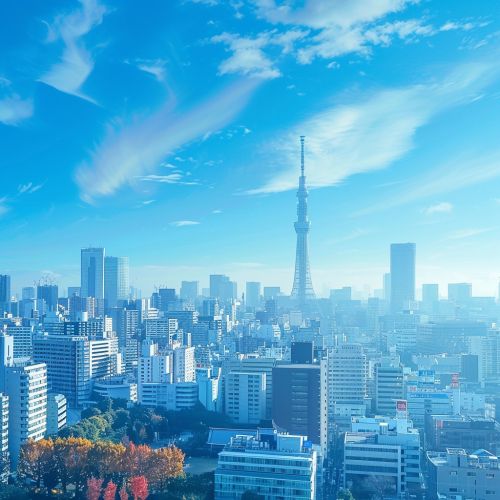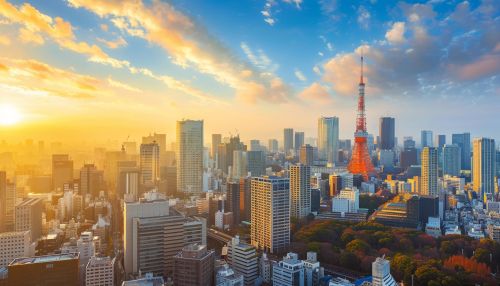History of Tokyo
Early History
Tokyo, originally known as Edo, has a rich history that dates back to ancient times. The area that is now Tokyo was first settled around 3000 BC during the Jomon Period. Archaeological evidence suggests that the region was inhabited by hunter-gatherers who lived in pit dwellings and used stone tools. The fertile land and abundant resources made it an ideal location for early settlements.
During the Kofun Period (250-538 AD), the area saw the construction of large burial mounds, indicating the presence of a powerful local elite. The region was part of the Musashi Province, which played a significant role in the political landscape of ancient Japan.
Edo Period
The transformation of Edo into a major city began in 1603 when Tokugawa Ieyasu established the Tokugawa shogunate and made Edo the seat of his government. This marked the beginning of the Edo Period (1603-1868), a time of relative peace and stability in Japan. Edo grew rapidly, becoming one of the largest cities in the world by the 18th century.
The city's layout was carefully planned, with the Edo Castle at its center. Surrounding the castle were the residences of the daimyo (feudal lords), samurai quarters, and merchant districts. The Tokaido road, which connected Edo to Kyoto, facilitated trade and communication, further boosting the city's growth.
Meiji Restoration and Modernization
The Meiji Restoration of 1868 marked a significant turning point in Tokyo's history. The shogunate was abolished, and the emperor was restored to power. Edo was renamed Tokyo, meaning "Eastern Capital," and became the official capital of Japan.
During the Meiji Period (1868-1912), Tokyo underwent rapid modernization. Western technologies and ideas were adopted, leading to the construction of new infrastructure, including railways, telegraph lines, and modern buildings. The city's population grew rapidly, and it became a center of political, economic, and cultural activity.


Taisho and Early Showa Periods
The Taisho Period (1912-1926) saw continued growth and modernization in Tokyo. However, the city faced significant challenges, including the devastating Great Kanto Earthquake of 1923, which destroyed much of the city and resulted in the loss of over 100,000 lives. The earthquake prompted extensive reconstruction efforts, leading to the development of modern urban planning and building codes.
The early Showa Period (1926-1989) was marked by political turmoil and the rise of militarism in Japan. Tokyo played a central role in Japan's efforts during World War II, and the city suffered extensive damage from Allied bombing raids. The Tokyo air raids of 1945 resulted in the destruction of large parts of the city and the loss of many lives.
Post-War Reconstruction and Economic Boom
Following Japan's defeat in World War II, Tokyo underwent a period of rapid reconstruction and economic growth. The American occupation of Japan (1945-1952) brought significant changes to the city's political and social structure. The introduction of democratic reforms and economic policies laid the foundation for Tokyo's post-war recovery.
The 1964 Tokyo Olympics showcased the city's resurgence and marked its emergence as a global metropolis. The event spurred the development of new infrastructure, including highways, sports facilities, and public transportation systems. The Shinkansen (bullet train) was introduced, revolutionizing travel in Japan.
During the Japanese economic miracle (1950s-1990s), Tokyo became a major financial and commercial hub. The city's skyline transformed with the construction of numerous skyscrapers and modern buildings. The Tokyo Stock Exchange emerged as one of the world's leading financial markets.
Contemporary Tokyo
Today, Tokyo is one of the most populous and dynamic cities in the world. It is a leading global city, known for its advanced technology, vibrant culture, and economic prowess. The city is home to numerous multinational corporations, research institutions, and cultural landmarks.
Tokyo's transportation system is one of the most efficient and extensive in the world. The Tokyo Metro and Toei Subway networks, along with an extensive network of buses and trains, provide comprehensive coverage of the city. The Narita International Airport and Haneda Airport serve as major gateways for international and domestic travel.
The city's cultural scene is diverse and vibrant, with numerous museums, theaters, and galleries. The Tokyo National Museum, Mori Art Museum, and Kabuki-za theater are just a few examples of the city's rich cultural offerings. Tokyo is also known for its culinary scene, with a wide range of dining options from traditional Japanese cuisine to international fare.
